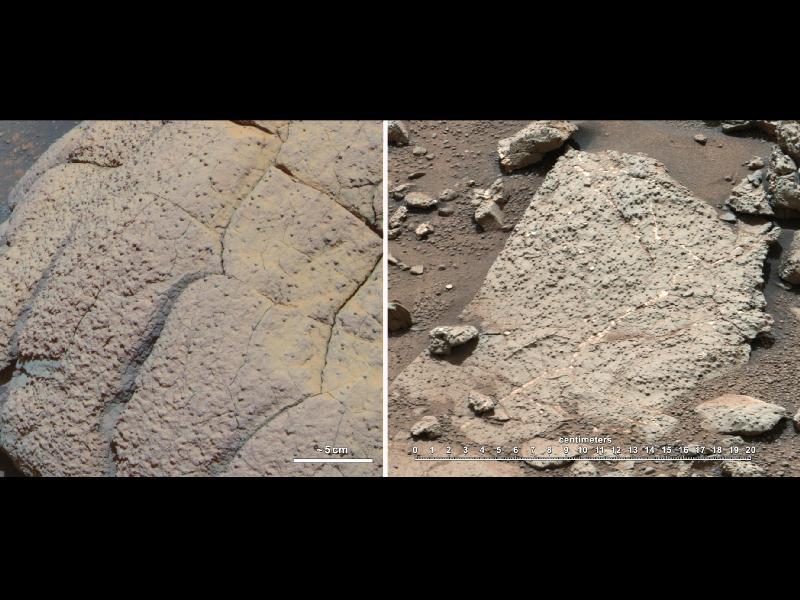Microbes below Earth’s surface could be potential link to Mars rover discovery
The Curiosity rover, on the right from Feb 2013, show rock sediments from the Sheepbed unit were likely deposited under water. (Photo by NASA/JPL-Caltech/Cornell/MSSS).
NASA scientists recently announced that a drill sample taken by the Mars Curiosity rover contained carbon and other elements necessary for life.
Robert Hazen, executive director of the Deep Carbon Observatory, says the discovery of carbon on Mars is important, because carbon bonds easily to other atoms, making it different from all other elements. Every biomolecule is based on carbon.
“It’s the element associated with most of our energy resources, and of course, then it’s tied to environment and climate, but also new materials and all of the economic benefits that come from carbon-based materials,” he said.
The Deep Carbon Observatory found evidence of microbial life a few miles beneath the Earth’s surface, Hazen said. But these microbes can be inactive for thousands of years.
“If you take all those microbes that live underground, it’s a significant fraction of all the biomass on Earth, but it’s hidden from us. We really don’t understand it yet,” he said.
Microbes first evolved in the early stages of Earth, Hazen said. But in order to survive Earth’s ultraviolet radiation, volcanoes and meteors, these microbes adapted to living with little energy — underground.
“Mars was warm and wet before Earth, and so many NASA scientists and members of the Deep Carbon Observatory as well, are looking at Mars as possibly the place where life originated,” he said.
Through their research, Hazen says, observatory scientists are beginning to learn how carbon interacts with rocks and minerals, because it could give researchers potential solutions to climate change problems.
“Rocks, minerals, life. They’re all so closely connected together that you can’t change one system without changing the others,” he said. “Life and humans in particular, are changing the global environment, so Earth can change and ameliorate those effects if we understand how it works. That’s what the Deep Carbon Observatory is all about, understanding how Earth works as a planet.”
The Deep Carbon Observatory isn’t looking for new energy resources, Hazen said, but rather, learning where hydrocarbons come from, how they’re distributed in the Earth’s interior and finding new ways to form hydrocarbons.
“We may be glimpsing some kind of stage in the origin of life that’s still on Earth today, is still reproducing in its very slow methodical flat way on mineral services. That’s a possible discovery. I won’t make any claims, but stay tuned over the next seven years. You may be getting some really big headlines,” he said.
Correction: A previous version of this story incorrectly stated that a Mars rover had discovered “microbes” on Mars. In fact, the rover discovered carbon elements than some researchers have linked to Earth-based microbes.
